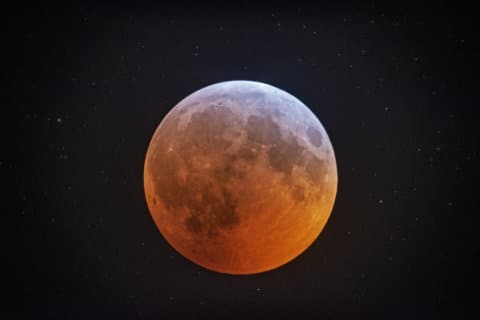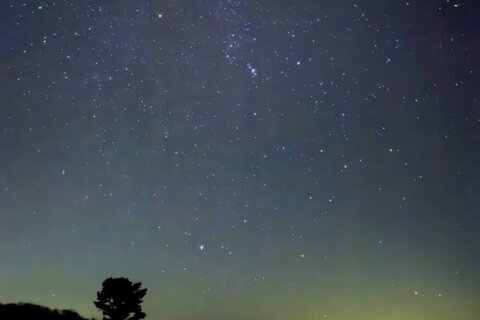Space related topics sure have been in the news lately.
China just landed a rover on Mars, while a week ago China’s out of control rocket was being monitored worldwide to determine when and where the 22 tons of space junk would come down. NASA got a new Administrator and space tourism is literally on the horizon
(Disclaimer: I am a crew candidate for the dearMoon SpaceX lunar flight scheduled for 2023.)
The other big news space-wise this week was a virtual briefing on May 11 for the media by NASA on the status of the James Webb Space Telescope (JWST).
The Webb telescope is an international collaboration between NASA, the European Space Agency (ESA) and the Canadian Space Agency (CSA).
WTOP has reported on the JWST through the years, providing details, updates and the biggest revelation in this briefing — that JWST is a “GO” to be shipped from Northrop Grumman in California to its launch site in French Guiana in late August.
In California, Northrop Grumman has been working to join the telescope to the spacecraft. The seagoing voyage will take several weeks and will venture through the Panama Canal to finally reach the Arianespace rocket launch facilities.
WTOP’s James Webb Space Telescope coverage
- 2016: James Webb Space Telescope has 2 years until expected launch
- 2017: Excitement surrounds space telescope, Moon missions
- Jan. 2018: ‘Super Bowl of Astronomy’ wraps up in Prince George’s County
- March 2018: Launch of James Webb Space Telescope delayed until possibly 2020
An Ariane-5 rocket will launch the JWST as it was the largest rocket available when the spacecraft-telescope was being designed. JWST folds up to fit inside the noise cone fairing of the Ariane-5 and will undergo a complex and precise deployment sequence after successfully reaching orbit.
A May 2021 report by the Government Accountability Office (GAO) cited an issue with the Ariane-5 fairing: “The JWST launch date will likely be delayed beyond October 2021 due to anomalies discovered in the JWST launch vehicle.”
During the briefing, as well as follow up interviews, the Ariane-5 was described as “being readied” with JWST “number 3 in the launch manifest.”
The two launches before JWST should provide expected data to indicate the status of the fairing’s performance. No change was announced to the launch date of Oct. 31 this year.
Once JWST is launched and in orbit, it will be controlled by the JWST Mission Operations Center (MOC) located at the Space Telescope Science Institute in Baltimore, Maryland.
A backup MOC is located at NASA’s Goddard Space Flight Center (GSFC) in Greenbelt, Maryland. JWST was built at Goddard.
I visited the MOC in January 2018 and interviewed Carl Starr, Mission Operations Manager, or “MOM,” for JWST. COVID-19 prevented an in-person visit this week, but I got a MOC update from Starr via telephone.
He said that the MOC has been in a “major rehearsal for eight days in a row, and this has been a monthly routine. The rehearsals are in real time — 24/7 — for both the Purple and Green shifts. There have been three shifts at the MOC since last October.”
As for his MOC staff, “approximately 400 people are ‘console support,’ with 60-plus on site for each shift, another 120 off site at different parts of the country, as well as in Europe and Germany for MOC support. Total MOC personnel is approximately 600.”
I had asked Starr what his biggest concerns were as JWST’s “MOM” in 2018 and did so again in 2021. His answer hasn’t really changed at all.
“Making sure people aren’t going to burn out,” Starr said.
“There is a lot of stress inherent with controlling a $10 billion [emphasis added] national asset, and I want to help them manage that. We do so by reassuring them we have a good plan.”
The MOC had COVID-19 protocols and an associated plan in place during the pandemic for the staff, and as I talked to Starr he relayed that he was going to get another COVID-19 test in preparation for a full-up rehearsal run next week.
Starr concluded our chat by saying “I would like to have the public come to the STScI to see how their tax dollars are being spent and to witness what we are doing.”
In checking with STScI, it is currently closed to the public due to the pandemic, but it is “monitoring statewide pandemic conditions and the approaches of academic institutions, businesses and local governments to the changing conditions in developing our plans.”
The Institute has extensive education and outreach opportunities that are available to the public and schools.
To provide a perspective on the science side of JWST, I emailed some questions to Amber N. Straughn, an astrophysicist and deputy project scientist for communication for the Webb Telescope, and associate director of the Astrophysics Science Division at Goddard.
Will you be observing with JWST? If so can you share what it will be regarding?
I am a team member on several different early observing programs for JWST, all of them broadly focused on the area of galaxy evolution.
I am specifically interested in how galaxies form their stars and black holes, and how those processes change over time, and with JWST we’ll start to gain a much better understanding of how that process takes place at earlier times in the universe.
And, of course, JWST was initially designed to search for the very first epoch of galaxies to be born after the Big Bang – that’s a part of space we’ve literally never seen before, so seeing what lies beyond our current limit will undoubtedly be very exciting.
What is your job at GSFC and JWST?
I’m an astrophysicist and serve as the JWST Deputy Project Scientist for Communications. What that means is that I’m the scientific liaison from the JWST Project Science team to the Communications and Legislative Affairs teams.
I’m sort of a go-between…I try to help translate the technical aspects of the mission in a way that the public can understand.
Functionally this means I review products like news features and social media content, and I help with things like communications strategy.
Aside from JWST, I’m also the Associate Director for Communications for the Astrophysics Science Division at Goddard, where I lead an amazing team doing communications work for Goddard’s non-flagship missions and research programs.
What do you think will be the biggest discovery by JWST?
That’s a really hard question to answer! I think uncovering what the very early galaxies are like will be groundbreaking for galaxy evolution.
I also think JWST will be groundbreaking for exoplanet science. Ultimately though, my prediction is that the biggest discovery by JWST will be something completely and totally surprising.
That’s what can happen when we launch big, bold, ambitious missions like JWST, and I think its discoveries will surprise and delight us in ways we haven’t yet dreamed of.
What advice can you give students who want to become involved in space?
First: find good mentors who can help you make connections and find opportunities — these can be teachers, guidance counselors, or someone that has the job you want someday. Second: do the “extra stuff” if you can – look for summer programs, join interest clubs, etc.
And finally: don’t be afraid to stretch yourself, and to fail. I’ve failed over and over (and still do!) and it’s how we grow. Okay one more: keep balance in your life and do things that give you joy.
As I write this, International Astronomy Day is being observed, forgive the pun, around the planet. JWST will rewrite the textbooks on astronomy and astrophysics just like Hubble Space Telescope and Mount Wilson Observatory did when they became operational.
It is an axiom in astronomy that whenever a revolutionary telescope or scientific instrument observes the Universe new discoveries will follow.
Rest assured that JWST is revolutionary and the people who built, operate and observe with it, extraordinary. WTOP will continue to follow this historic journey to the stars.
Follow me at Twitter @skyguyinva and my daily blog to keep up with the latest news in astronomy and space exploration.
You can also email me at skyguyinva@gmail.com.







